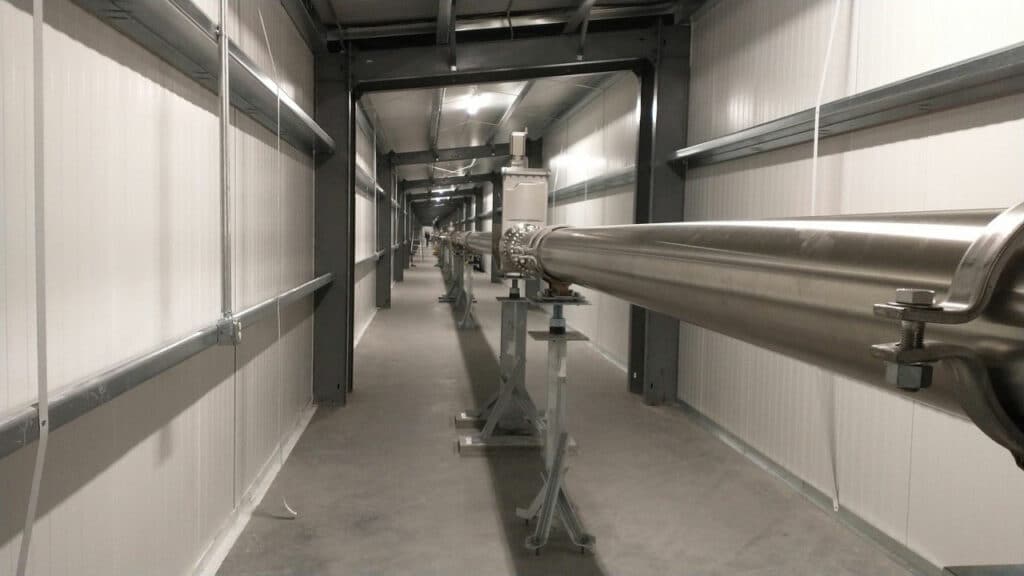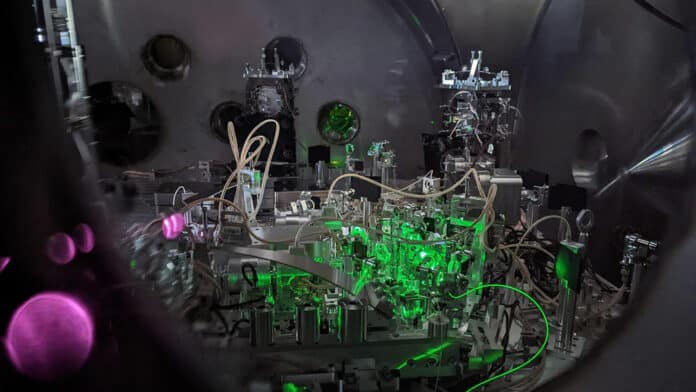The Laser Interferometer Gravitational-Wave Observatory (LIGO) made a historic discovery in 2015 when it directly detected gravitational waves for the first time. These waves are ripples in space and time produced by the collision of two black holes.
LIGO and its European sister, Virgo, have since detected dozens of such events, as well as mergers of neutron stars, which are another type of dense stellar remnant. At the heart of LIGO’s success is its ability to measure the stretching and squeezing of the fabric of spacetime on scales 10 thousand trillion times smaller than a human hair.
Now, LIGO researchers report a significant advance in a quantum technology called “squeezing” that allows the LIGO facility to detect about 60% more mergers than before. This new “frequency-dependent squeezing” technology will greatly boost LIGO’s ability to study the exotic events that shake space and time.
LIGO operates by firing a laser beam through two long tunnels, bouncing it off mirrors, and then measuring its return. The mirrors spaced four kilometers apart are capable of detecting a change of less than one ten-thousandth the charge diameter of a proton. This indicates that gravitational waves have passed by.
Although the measurements made by LIGO are incredibly small, the observatory’s precision has continued to be limited by the laws of quantum physics. At extremely tiny subatomic scales, empty space is filled with a faint crackling of quantum noise. This noise interferes with LIGO’s measurements and limits how sensitive the observatory can be.
“Now that we have surpassed this quantum limit, we can do a lot more astronomy,” explains Lee McCuller, assistant professor of physics at Caltech and one of the leaders of the new study. “LIGO uses lasers and large mirrors to make its observations, but we are working at a level of sensitivity that means the device is affected by the quantum realm.”

‘Quantum squeezing’ is a method for hushing quantum noise or, more specifically, for pushing the noise from one place to another with the goal of making more precise measurements.
Since 2019, LIGO’s two detectors have been using a technique known as squeezing light to enhance their sensitivity to the upper-frequency range of gravitational waves they detect. However, much like squeezing one side of a balloon causes the other side to expand, squeezing light comes at a cost. While making LIGO’s measurements more precise at higher frequencies, the technique has resulted in less precise measurements at lower frequencies.
Now, LIGO’s new frequency-dependent optical cavities – long tubes about the length of three football fields – allow the team to squeeze light in different ways depending on the frequency of gravitational waves of interest. This helps reduce noise across the whole LIGO frequency range.
The technology, as its name suggests, works by squeezing different properties of the light for different frequencies to provide the best results. To achieve the most precise detections of gravitational waves, researchers require more certainty in the low-frequency amplitude and high-frequency phase. This system now makes that possible.
“Before, we had to choose where we wanted LIGO to be more precise,” says LIGO team member Rana Adhikari, a professor of physics at Caltech, in the press release. “Now we can eat our cake and have it too. We’ve known for a while how to write down the equations to make this work, but it was not clear that we could actually make it work until now. It’s like science fiction.”
With this new “frequency-dependent squeezing” technology, the detectors can now probe a larger volume of the universe and are expected to detect about 60% more mergers than before. This greatly boosts LIGO’s ability to study the exotic events that shake space and time.
LIGO’s partner observatory, Virgo, is also expected to start using frequency-dependent squeezing technology within the current run, which will continue until roughly the end of 2024.
